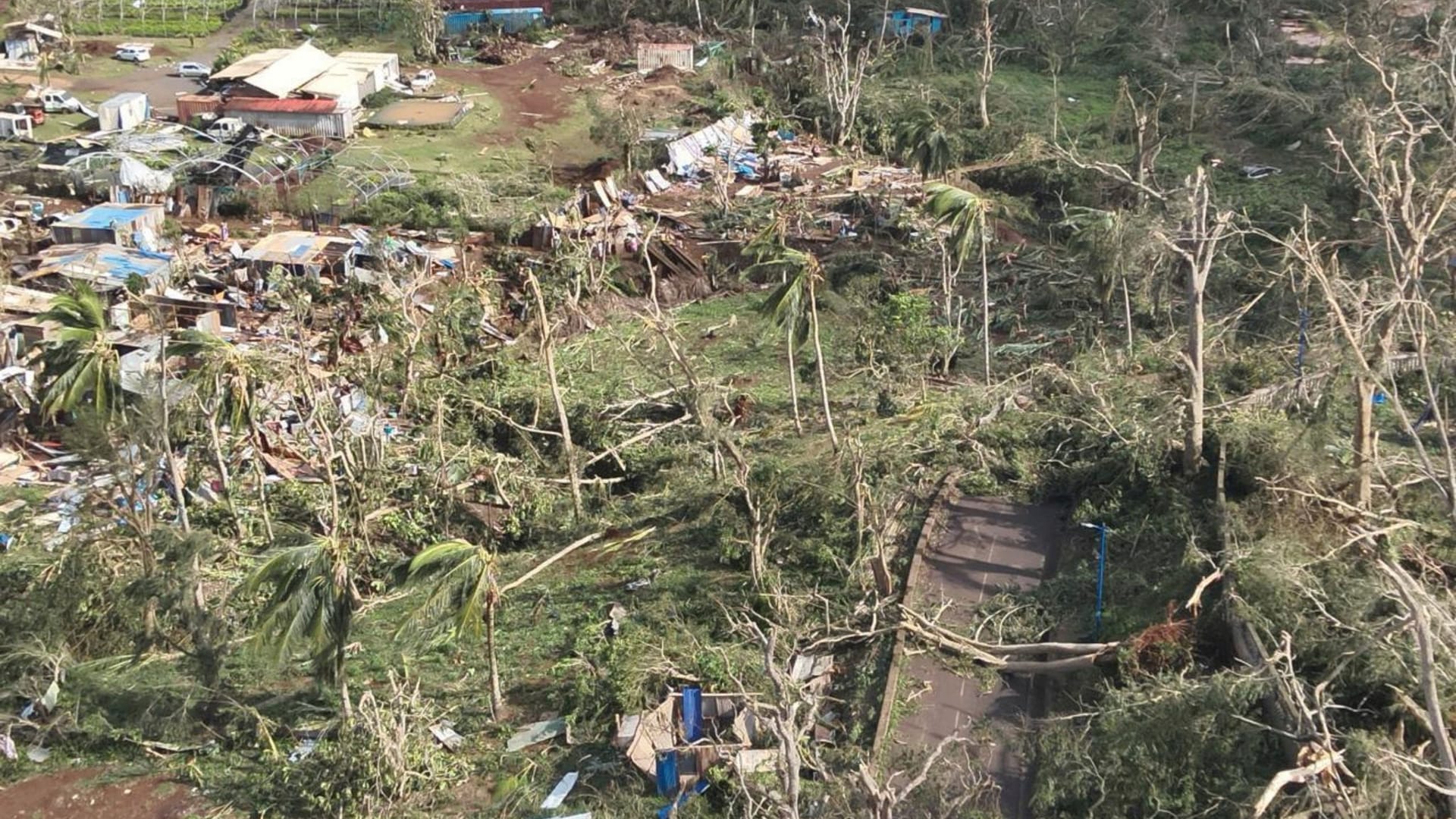Deadly hurricane
Initial analyses: Climate change has made “Chido” stronger
Updated on December 18, 2024 – 12:29 p.mReading time: 3 minutes

Cyclone Chido left a path of destruction on its path over Mayotte and Mozambique. According to scientists, its destructive power has been increased due to climate change.
The full extent of the destruction caused by tropical cyclone “Chido” on the French island group of Mayotte in the Indian Ocean and in Mozambique has not yet been recorded. But initial rapid analyzes already indicate that man-made climate change has intensified the cyclone.
On Saturday, cyclone Chido hit the French overseas territory of Mayotte and northern Mozambique with gusts of more than 220 kilometers per hour. It left behind a huge path of destruction, to which an as yet unknown number of people fell victim.


In initial analyses, research groups from the Grantham Institute at the British Imperial College London and the US non-profit organization Climate Central in Princeton have now come to the conclusion that man-made climate change has intensified the hurricane. Ralf Toumi, director of the Grantham Institute, is quoted in a statement: “Climate change has strengthened Chido into an explosive Category 4 storm. Had the atmosphere not been overloaded with carbon emissions, it would have been a less destructive Category 3 event.” These categories are recorded on the so-called Saffir-Simpson hurricane wind scale, which goes up to 5.
For their rapid analysis, Ralf Toumi and his colleague Nathan Sparks use the Iris model developed at Imperial College, which incorporates historical temperature and climate data: This can be used to infer the additional strengthening of a “Chido” type storm on recent warming – more precisely, on the changes in potential intensity (PI) influenced by global warming since 1980.
According to their analysis, the probability of a Chido-type storm in 2024 is around 40 percent higher compared to the pre-industrial baseline. “In a future world that is 2.6 degrees Celsius warmer, the probability of a Chido cyclone will be an additional 26 percent higher than today,” the analysis continues. This temperature scenario can be expected for 2100. Toumi warns: “We will see more and more hurricanes with intensity like Chido if we do not urgently switch to renewable energy.”
Nathan Sparks adds: “Our study confirms that tropical cyclones like Chido have become more intense and destructive as a result of climate change.” This result is consistent with trends in developed cyclones as the climate warms: many of them grew on the Saffir-Simpson Scale into the most destructive categories.
In fact, another rapid analysis of Hurricane Helene by the World Weather Attribution scientist initiative at Imperial College London recently came to a similar conclusion. “Helene” hit the Yucatán Peninsula, the Cayman Islands, Cuba and finally the USA at the end of September.
The climate scientist Friederike Otto, co-founder of World Weather Attribution, who was involved in the new analysis, now explains: “In Mayotte, the victims of poverty have become victims of climate change.” Those who lived in poor conditions were most affected: “The survivors, Those who have now lost everything are faced with water shortages and the looming threat of disease.”
For Otto, this is a tragic example of how climate change is affecting the poorest and most vulnerable: “Unfortunately, this is becoming the norm in Africa – a continent that has contributed the least to emissions but is suffering some of the worst weather extremes.”
The second rapid analysis of Chido concluded that unusually warm sea temperatures contributed to the intensification of the cyclone. Climate Central scientists use the “Climate Shift Index: Ocean” (Ocean CSI) they developed, which quantifies the influence of geothermal heat on sea surface temperatures.
In doing so, the group concluded that “Chido” was amplifying as it passed over waters that were, on average, 1.1 degrees Celsius warmer than they would have been without human-caused climate change.
As the researchers themselves emphasize, Ocean CSI does not directly quantify how climate change affects the intensity of the cyclone – rather, the index refers to the ocean conditions that allowed Chido to strengthen. As Climate Central's Joseph Giguere summarized: “Unusually high sea surface temperatures, made more than 50 times more likely due to climate change, fueled this storm as it became increasingly intense and destructive.”



